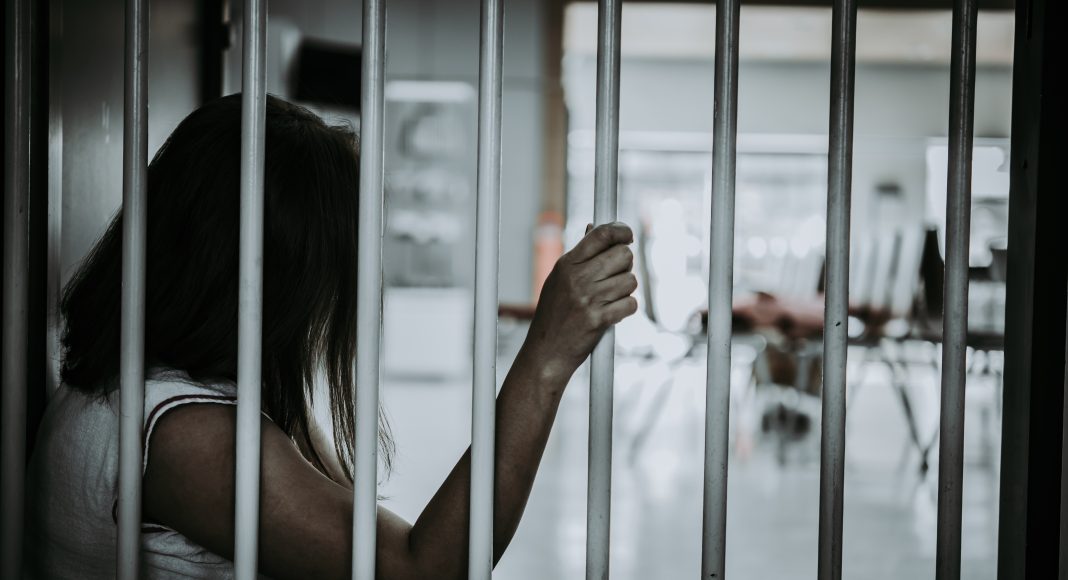Female prisoners only make up 4% of the total British prison population, and as such the specific issues that they struggle with are marginalised in the political debate around the prison system. Just as in wider society, class, gender and state violence intersect, with the result that some of the most vulnerable people are abused and violated with impunity. There is entrenched misogyny at every level of the ‘justice’ system, from the police to courts and prisons. FRANCESCA NADIN, former Palestine Action political detainee at New Hall prison, writes.
One of the worst problems is domestic abuse. The great majority of women in prison have suffered from serious violence much worse than their own ‘crimes’. They are left feeling incredibly vulnerable and so it’s understandable that female prisoners are much more fearful of the consequences of speaking up for themselves while locked up. For that reason, on the whole they are less likely to challenge the authority of the prison administration, and collective action is much more limited than in male prisons. But who can blame them? There are plenty of cowardly male officers who take full advantage of their position to intimidate female prisoners, which can easily trigger PTSD from previous abuse. It’s no coincidence that severe mental health issues and self-harm is prevalent amongst female prisoners. One in three women self-harm and many others turn to self-medication as a coping mechanism; suicide attempts are commonplace.
I have heard horrific stories from women whose lives have been destroyed and almost taken away by abusive partners. The callous treatment meted out by the prison system is a continuation of this mistreatment in a different setting, that of the state institution. There’s no escape for them and so ultimately they become resigned to it. They are made to feel worthless and powerless in every sense.
To give an idea of the level of violence that these women face, a study conducted at HMP Drake Hall showed that almost two thirds of women in prison have had symptoms indicative of brain injury. For most, this was caused by domestic violence, usually from blows to the head or strangulation. But it’s not just physical violence that affects them, but also coercive control and financial, sexual, and emotional abuse. This can even continue while they are inside, through threats and harassment of friends and family members. Like a friend of mine, who was still being contacted by her ex-partner despite a restraining order. When the prison administration discovered this they blamed and punished her. She had originally met this man as a teenager, when he groomed her in the care home where he was working with complete impunity. Over half of all women in prison have been subject to child abuse. From a very young age this kind of treatment becomes normalised to them, and it continues into adulthood.
Within the prison system, 60% of women are sentenced to custodial sentences of six months or less, and most have been convicted of ‘non-violent crimes’. But what of their abusers? Legislative responses to this endemic problem have been incredibly feeble, with so-called ‘Domestic Violence Protection Orders’ obtained in only 1% of domestic abuse crimes. Less than 3% of incidents of domestic violence reported to the police end in conviction. Incompetence and corruption fuelled by misogyny means that abuse is ignored even when there is ample evidence. The police are inevitably on the side of the abuser, who sometimes even manages to play the victim. Like another friend of mine, whose abuser took out a restraining order against her. He used this to control her, inviting her to his house then calling the police so she would be arrested for breaching the order. All this while she was homeless and had nowhere else to go, with the authorities well aware of her situation. One arrest was for throwing a beer mat at her abuser. The message is clear- defend yourself and you will be punished. She was was brutalized once again when the arresting officer broke her arm and then attempted to hide the evidence. It’s obvious why victims avoid talking to the police- they are ignored, belittled and humiliated at every step.
The courts routinely ignore evidence of domestic abuse as a factor in crime, and there is no specific legal defence available for victims. Sometimes they are coerced into committing crime or take the rap for their partner so they can escape punishment, and the rampant use of joint enterprise facilitates this. Coercion manifests itself differently according to each woman’s background, with factors such as race, nationality and mental health intersecting in specific ways, but with poverty as the overarching backdrop. It’s clear that capitalist society has no use for these women, so they are discarded and left to rot in prison.
A lot of people I met in prison told me that they felt safer inside because they were finally out of the clutches of their abuser. A grim state of affairs. But what about when they leave prison? Many are determined to start afresh, but how many actually do? It’s impossible to say. My guess would be not many, since the system is stacked against them in so many ways.
We must never lose sight of the ultimate aim to create an egalitarian society free from misogyny, in which nobody could ever say they were safer in prison than out of it. Yet, even in the short term, many things could be done to improve the situation, if the government had the political will and was prepared to commit the resources to do so. This would include making the courts actually follow sentencing guidelines that take domestic violence into account as a mitigating factor and providing proper places for traumatised women to heal other than behind bars. Refuges are essential to helping victims rebuild their lives but they have suffered severe cuts for years along with all other public services apart from the police. Sending fewer women to prison would save public money that could be used for refuges. The government has been compelled to acknowledge the prevalence of violence and trauma in the lives of women prisoners in the sentencing review and the recently created Women’s Justice Board, but there is no guarantee this will result in any improvement in practice. We need to continue to argue and advocate for the rights of women in and out of prison to live free from fear.




